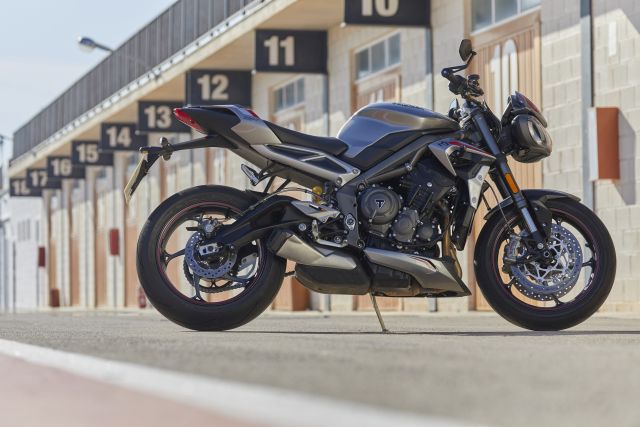
We head to Spain to ride the 2020 Triumph Street Triple RS
Story: Anosh Khumbatta
Photography: Kingdom Creative
Three years ago Triumph revamped their best-selling naked middleweight with a whole new look, an updated electronics package, a bigger 765-cc motor and three different variants. The top-of-the-line RS version has since been considered the segment leader and, with next year’s Euro 5 restrictions looming, Triumph had no choice but to update this excellent motorcycle in line with next year’s legislature. We recently spent some time with this machine through the hills along the southern coast of Spain, and also at the Cartagena Circuit, and here’s all you need to know about the updated Triumph Street Triple RS.
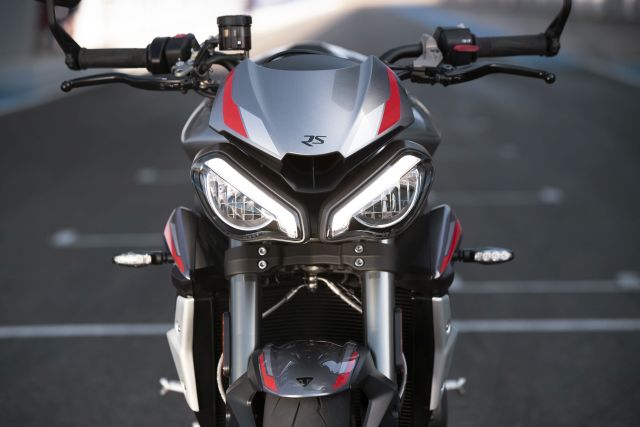
The first visual difference you would notice is the evolution of the trademark twin headlights. The Triumph Street Triple has gone from bug-eyed wonder to streamlined aggressor. Those teardrop-shaped eyes have been replaced by slightly more angular units with semicircular reflectors within, topped off by new LED DRLs that contribute to the angry look. Viewed from the side, there is no mistaking this bike for anything else, but look closer and you will notice that all the body panels have been changed for a slightly sharper, more streamlined look. This includes the belly-pan, tail section, flyscreen and side panels, while only the fuel tank has been carried over from the current bike. Hardcore fans of the Triumph Street Triple will also notice that the aluminium frame, although unchanged, has gone from black to titanium silver. There’s also an all-new TFT screen, with different layout options and colour choices.
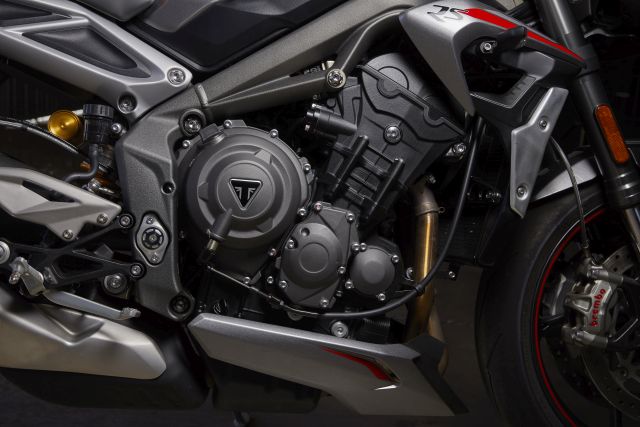
Under the skin, the 2020 Triumph Street Triple RS is still powered by the 765-cc three-cylinder motor that also does duty in the current Moto2 World Championship. Although peak power is still 123 hp, Triumph have now given this engine a more robust midrange for better real-world rideability. So, the new Street Triple RS makes more power between 7,500 and 9,500 rpm; 9 per cent more at 8,000 rpm according to Triumph. Peak torque is now 2 Nm higher, but kicks in 1,450 rpm earlier; the current bike makes 77 Nm at 10,800 rpm, while the new RS makes 79 Nm at just 9,350 rpm, with noticeably more grunt available through the midrange. Triumph have also lightened the crank, clutch and balancer shafts, reducing rotational inertia by a claimed 7 per cent and this, in conjunction with the meatier torque curve, contribute to sharper throttle response all across the rev range.
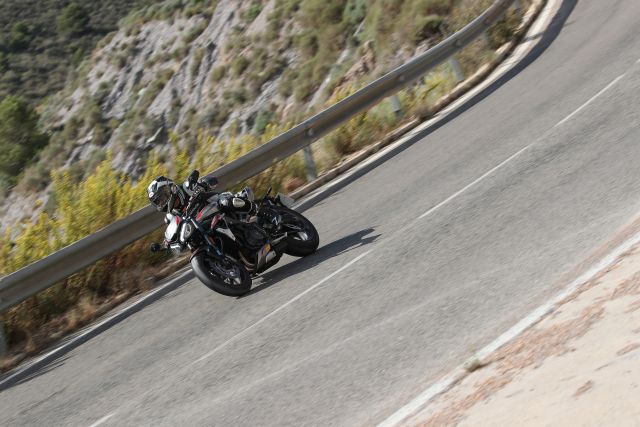
Riding through the hills, I consistently found myself exiting those tight corners in a gear higher than expected, with enough grunt on tap to keep things entertaining. Power is transmitted to the wheels via an unchanged six-speed gearbox, but an all-new, two-way quickshifter means that you can tap up or down the ‘box without having to bother about the clutch,
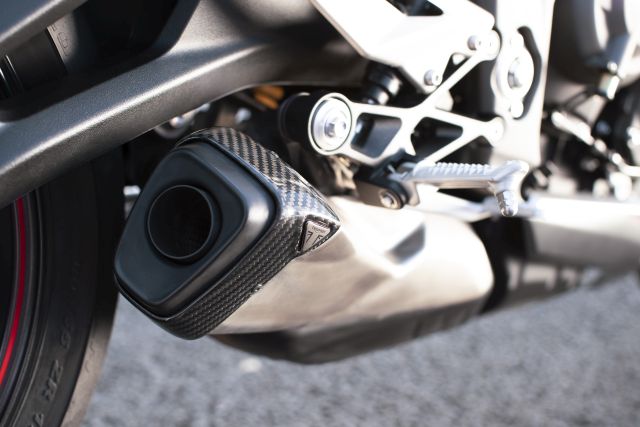
One of the major changes is the all new Euro 5 exhaust system, which now incorporates two catalytic converters and terminates with a new carbon-fibre-tipped end-can. Other small changes include a new handlebar clamp, a more pronounced air intake above the headlights and the latest generation Pirelli Supercorsa SP tyres.
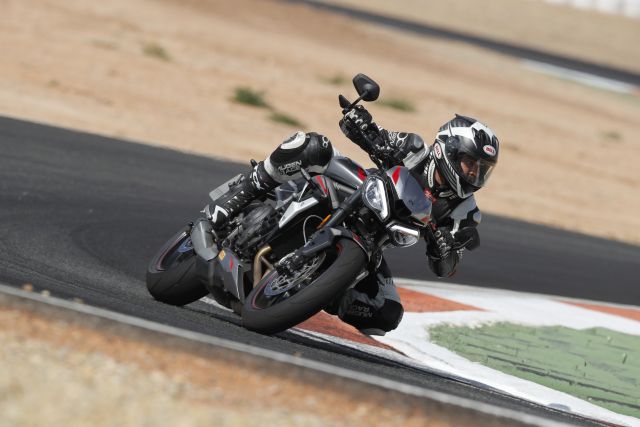
The 2020 Triumph Street Triple retains the excellent brake and suspension components that complement that super-sharp chassis so well. A fully-adjustable 41-mm Showa fork does duty at the front, while the Öhlins STX40 monoshock handles damping duties at the rear. The dual Brembo M50 monobloc calipers continue to offer unmatched braking performance, helped along by that Brembo MCS 19.21 radial master cylinder that offers adjustability for lever reach as well as bite ratio.
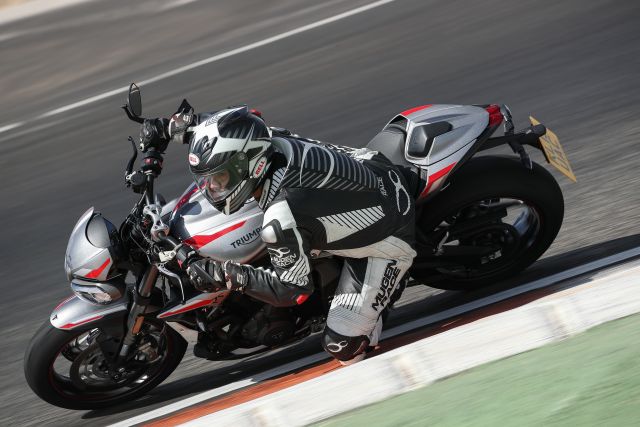
Out on the racetrack, there were no surprises; the Triumph Street Triple RS is still deadly accurate. The combination of its telepathic handling and the added grunt from the updates to the motor had me blasting through the long flowing corners at the Cartagena circuit, firing out of them at deadly speeds with the familiar three-cylinder howl ringing inside my helmet, before braking extremely late and laying the bike back down on to its side. The unending grip from the Pirellis gave me the confidence to push harder and harder and, even with the pegs scraping the tarmac, the Triumph Street Triple RS always went exactly where I wanted it to. The bike maintains its composure over bumpy corners and through sections of track where the negative camber threatened to send us into the gravel, and effortlessly had me feeling like a better rider than I really was.
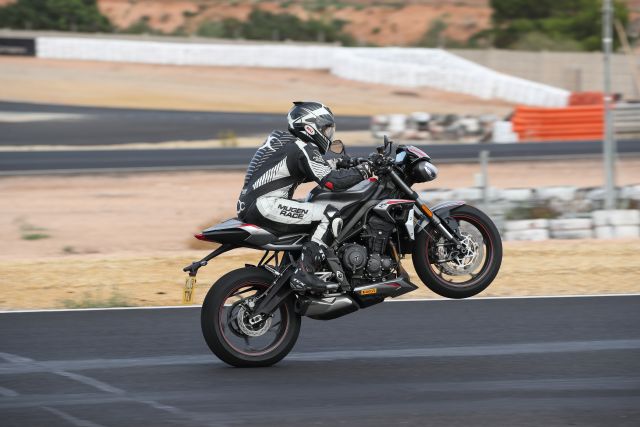
The 2020 Triumph Street Triple RS will be launched in India early next year and, if you currently own a 2017 or later Street Triple RS, this slew of somewhat minor updates may not justify trading up, as this really isn’t an all-new bike. However, if you are in the market for one of the best middleweight naked motorcycles around, this new Street Triple may be worth waiting for.
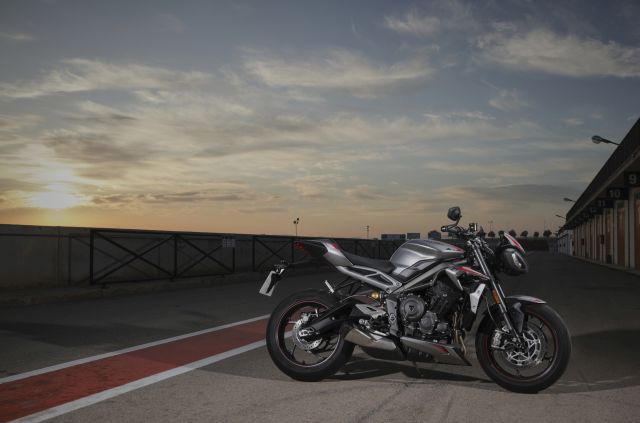
Look for a detailed ride review in the November 2019 issue of Bike India.


Leave a Reply